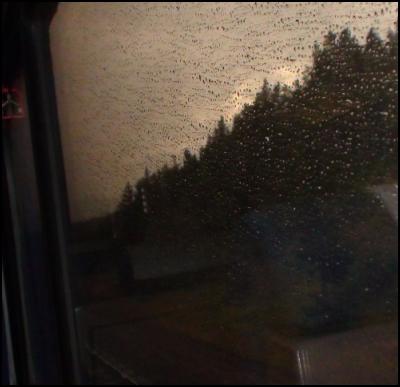Stateside with Rosalea Barker: Montana
Montana
“If travelers need any kind of assurance that they’ll be safe from antiestablishment zealots while visiting Montana, at least consider that most of the crazy folk from Montana prefer to play out their lives of crime outside of the state. Chances are very good that all the people you meet in Montana are going to be welcoming and sane—or sane enough.”
So say the writers of the Moon travel guide to Montana, W.C. McRae and Judy Jewell, in a section entitled “The New and Really Wild West”. They write of two basic groups of anti-government factions in Montana—white supremacists in the area close to the Idaho border, and the Freemen movement, which opposes any government interference in their sovereign individual rights. The writers point out that the Unabomber lived in a cabin in Montana, and that the man who shot dead two security guards at the US Capitol in 1998 was a part-time Montana resident.
Montana is ranked 48th among the states in population density, with 2.5 people every square kilometer. As such, it’s entitled to only one US Representative, at present a Republican. The state’s two US Senators are both Democrats, and neither will be on the ballot this November. Montana was admitted to the Union as the 41st state on November 8, 1889, just six days after the admission of North and South Dakota, and three days before the admission of Washington state, which completed the creation of US states along the Canadian border except for a short stretch of Idaho, which became a state the following year.

Click to enlarge
CAPTION: The view from the Empire Builder in Glacier National Park, September 2008
Amtrak’s Empire Builder passenger train takes 12 hours to traverse Montana, the longest time spent in any state on its trips between Seattle and Chicago. Much of that time is spent along the southern border of Glacier National Park, following the route of the Great Northern Railway, which had reached Montana in 1887 and had completed its track-laying over the Rockies to Seattle by 1893. Amtrak’s train is named for James J Hill, whose railroad and related enterprises saw six million acres of Montana being settled in just two years. There are three stops giving access to Glacier National Park, which continues above the border as the Waterton Lakes National Park in Canada.
Montana’s nicknames include the Big Sky State and the Treasure State, the latter because of the abundance of mineral resources. Since 1976, Montana has had a severance tax on coal (pdf), with 50 percent of the tax take going into a trust, the interest and income from which may be appropriated. The legislature authorizes the sale of coal severance tax bonds to finance renewable resource projects and local government infrastructure projects. Montana’s eastern prairies being as windy as they are, wind farms are high on the state’s agenda for development, but the need for long transmission lines and to conform with the state constitution’s 2004 addition of protection for “harvest heritage” complicate matters.
But my favorite discovery about Montana is that a young man from Helena traveled to New Zealand on a study abroad scholarship and continued from there to travel the world documenting the reactions of the people he met. He was born without legs, travels about on a skateboard, and is well-known for his skiing prowess. For your edification and enjoyment here is the promotional video Kevin Michael Connolly did for his 2009 book, Double Take, comparing his experience of reading the $19.99 hard cover edition to what happened when he bought a $10.00 ebook reader.
Double Take Trailer from Kevin Michael Connolly on Vimeo.
--PEACE—


 Binoy Kampmark: Closed For Business - The Oddities Of Trump’s Tariffs
Binoy Kampmark: Closed For Business - The Oddities Of Trump’s Tariffs Martin LeFevre - Meditations: Teach Children The Distinction Between The World And Nature
Martin LeFevre - Meditations: Teach Children The Distinction Between The World And Nature Ramzy Baroud: Civil War On The Horizon? The Ashkenazi-Sephardic Conflict And Israel’s Future
Ramzy Baroud: Civil War On The Horizon? The Ashkenazi-Sephardic Conflict And Israel’s Future Gordon Campbell: On The Government’s Latest Ferries Scam
Gordon Campbell: On The Government’s Latest Ferries Scam Peter Dunne: Dunne's Weekly - While We're Breaking Up Monoliths, What About MBIE?
Peter Dunne: Dunne's Weekly - While We're Breaking Up Monoliths, What About MBIE? Adrian Maidment: Supermarket Signs
Adrian Maidment: Supermarket Signs